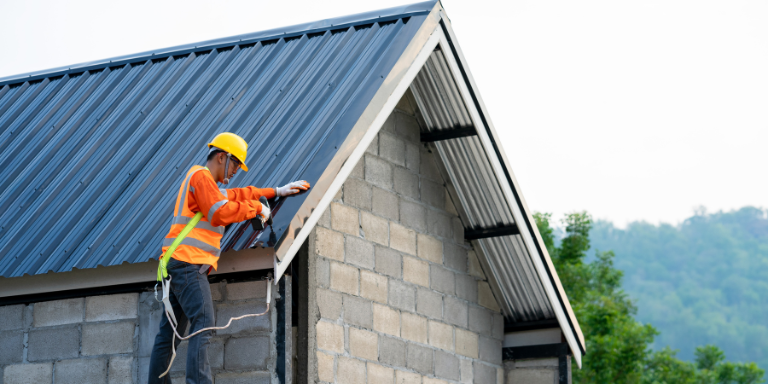
Minneapolis, MN, known for its vibrant culture, beautiful lakes, and thriving economy, also faces its share of severe weather conditions. From thunderstorms and heavy rains to the occasional tornado and harsh winter storms, the city’s climate can be unpredictable and often damaging. Storm damage restoration is a critical service for residents and businesses alike, ensuring safety and the preservation of property. This guide will delve into the essential aspects of storm damage restoration in Minneapolis, providing valuable insights and tips for dealing with the aftermath of severe weather.
Understanding Storm Damage in Minneapolis
Storm damage in Minneapolis can manifest in various forms, including:
Wind Damage: High winds can uproot trees, damage roofs, and break windows. Flying debris often exacerbates the destruction.
Water Damage: Heavy rains and flash floods can lead to water infiltration, causing structural damage, mold growth, and ruined personal belongings.
Hail Damage: Hailstorms can dent vehicles, shatter windows, and puncture roofs, leading to leaks and further water damage.
Snow and Ice Damage: Minneapolis winters can be brutal, with heavy snow and ice causing roof collapses, ice dams, and burst pipes.
Each type of damage requires a specialized approach for effective restoration.
Immediate Steps After a Storm
Safety First: Before assessing any damage, ensure that you and your family are safe. Avoid downed power lines, and check for gas leaks.
Document the Damage: Take photographs and videos of the damage as soon as it’s safe to do so. This documentation will be crucial for insurance claims.
Contact Your Insurance Company: Notify your insurance provider about the damage to start the claims process. Provide them with the documentation you’ve gathered.
Temporary Repairs: If possible, perform temporary repairs to prevent further damage. This might include tarping a roof or boarding up broken windows.
Choosing a Storm Damage Restoration Company
Selecting the right storm damage restoration company is crucial for effective and efficient repairs. Consider the following factors:
Experience and Expertise: Look for companies with a proven track record in storm damage restoration. Experienced professionals will know how to handle various types of damage and navigate insurance claims.
Certifications and Licensing: Ensure the company is properly licensed and certified by relevant authorities. Certifications from organizations like the Institute of Inspection, Cleaning and Restoration Certification (IICRC) are a good indicator of professionalism.
Comprehensive Services: A good restoration company should offer a wide range of services, including water extraction, structural drying, mold remediation, and general construction.
Emergency Response: Storms can strike at any time, and prompt action is critical. Choose a company that offers 24/7 emergency services.
The Restoration Process
The storm damage restoration process typically involves several key steps:
Inspection and Assessment: Restoration professionals will conduct a thorough inspection to assess the extent of the damage and develop a restoration plan.
Water Removal and Drying: If water damage is present, the first priority is to remove standing water and begin the drying process. This may involve using industrial-grade dehumidifiers and air movers.
Debris Removal: Fallen trees, broken glass, and other debris need to be safely removed from the property.
Structural Repairs: Depending on the severity of the damage, structural repairs might be necessary. This can include repairing or replacing damaged roofs, walls, and windows.
Mold Remediation: If water damage has led to mold growth, professional mold remediation is essential to ensure a safe living environment.
Final Restoration: This step involves the final touches to return your property to its pre-storm condition. It might include painting, installing new flooring, or other cosmetic repairs.
Preventive Measures for Future Storms
While it’s impossible to prevent storms, there are measures you can take to minimize potential damage:
Regular Maintenance: Regularly inspect and maintain your roof, gutters, and drainage systems to ensure they are in good condition.
Tree Trimming: Keep trees around your property trimmed to reduce the risk of branches falling during high winds.
Storm Shutters: Consider installing storm shutters to protect windows from flying debris.
Backup Power: Invest in a backup generator to keep essential systems running during power outages.
Emergency Kit: Prepare an emergency kit with essentials like water, food, medications, and important documents.
The Importance of Professional Restoration
Attempting to handle storm damage on your own can be risky and may lead to further complications. Professional restoration companies have the expertise, equipment, and resources to address the damage effectively. They can also help navigate the often-complex insurance claims process, ensuring you receive the compensation you deserve.
Storm damage restoration in Minneapolis, MN, is a vital service that helps residents and businesses recover from the aftermath of severe weather. By understanding the types of damage, taking immediate steps to document and report the damage, choosing the right restoration company, and following the restoration process, you can ensure a swift and efficient recovery. Additionally, implementing preventive measures can help protect your property from future storms, providing peace of mind in an unpredictable climate.
In the face of nature’s fury, resilience and preparedness are key. With the right approach and professional support, storm damage restoration can turn a potentially devastating event into a manageable challenge, allowing the vibrant community of Minneapolis to thrive once again.
